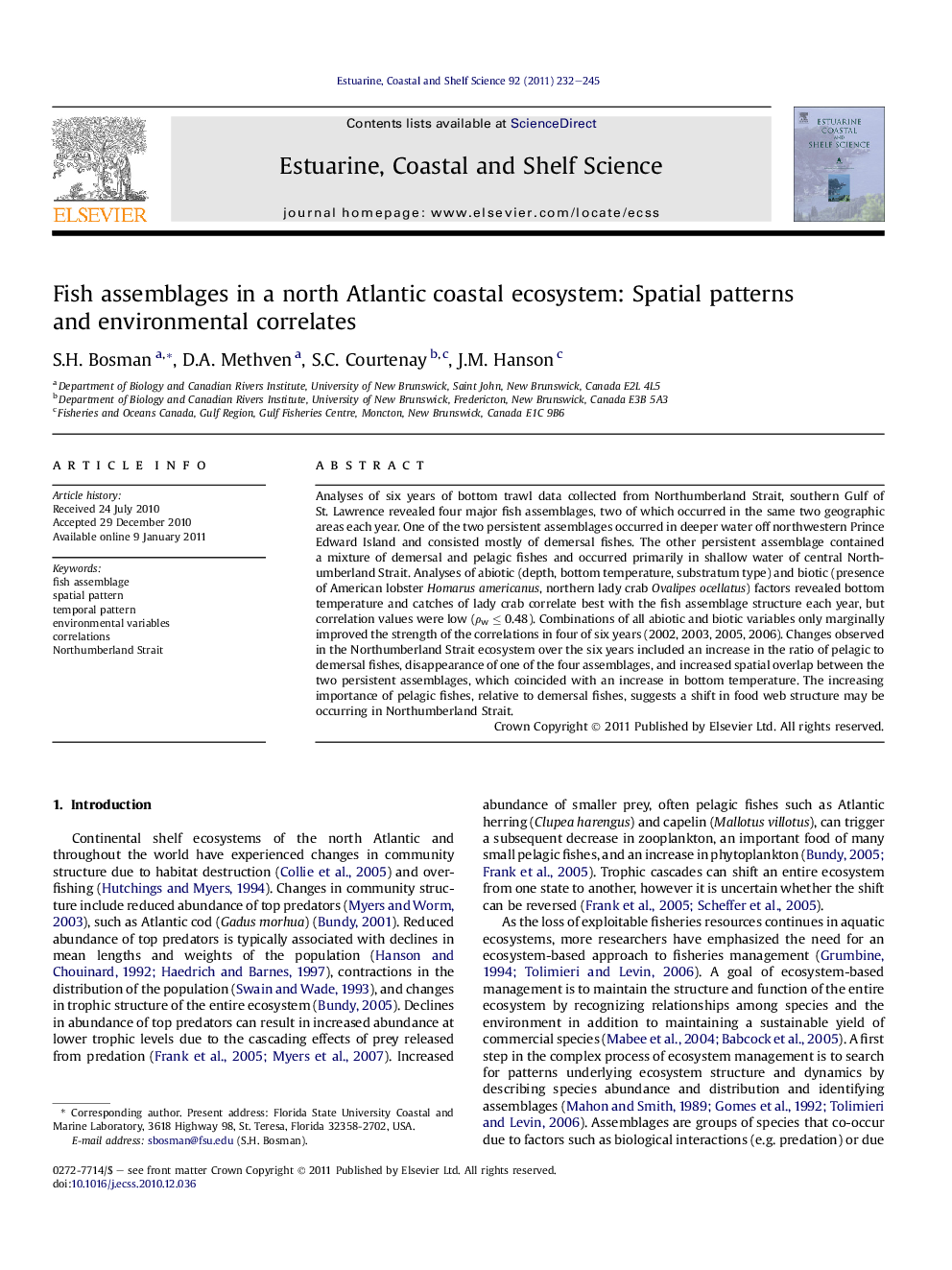| Article ID | Journal | Published Year | Pages | File Type |
|---|---|---|---|---|
| 4540676 | Estuarine, Coastal and Shelf Science | 2011 | 14 Pages |
Analyses of six years of bottom trawl data collected from Northumberland Strait, southern Gulf of St. Lawrence revealed four major fish assemblages, two of which occurred in the same two geographic areas each year. One of the two persistent assemblages occurred in deeper water off northwestern Prince Edward Island and consisted mostly of demersal fishes. The other persistent assemblage contained a mixture of demersal and pelagic fishes and occurred primarily in shallow water of central Northumberland Strait. Analyses of abiotic (depth, bottom temperature, substratum type) and biotic (presence of American lobster Homarus americanus, northern lady crab Ovalipes ocellatus) factors revealed bottom temperature and catches of lady crab correlate best with the fish assemblage structure each year, but correlation values were low (ρw ≤ 0.48). Combinations of all abiotic and biotic variables only marginally improved the strength of the correlations in four of six years (2002, 2003, 2005, 2006). Changes observed in the Northumberland Strait ecosystem over the six years included an increase in the ratio of pelagic to demersal fishes, disappearance of one of the four assemblages, and increased spatial overlap between the two persistent assemblages, which coincided with an increase in bottom temperature. The increasing importance of pelagic fishes, relative to demersal fishes, suggests a shift in food web structure may be occurring in Northumberland Strait.
► We examined fish assemblage structure in Northumberland Strait from 2001 to 2006. ► Two of the four assemblages identified were spatially and temporally persistent. ► Temperature and lady crab catches correlated best with assemblage structure. ► Pelagic to demersal fish ratio increased, suggesting a shift in food web structure.
